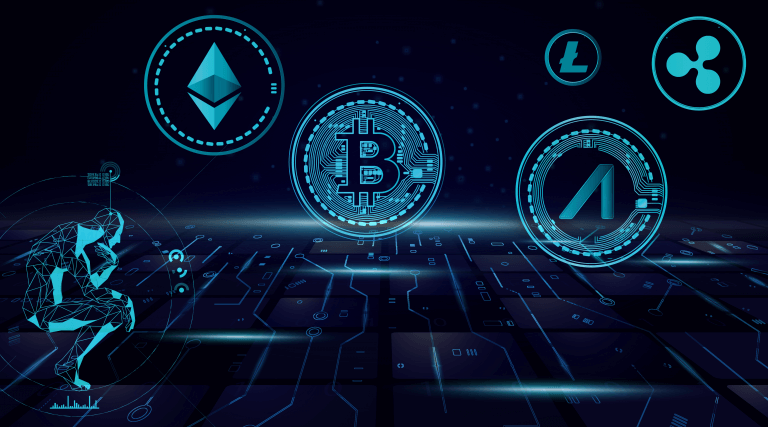Exploring Blockchain: Week 1 Insights from Web3Bridge Bootcamp
 Michael Ojekunle
Michael OjekunleTable of contents
- Setting the Scene: The Beginning of the Blockchain Odyssey
- Distributed Ledger Technology: The Backbone of Trust
- Cryptography: The Art of Securing Information
- Merkle Trees: The Structure of Integrity
- The History and Introduction to Blockchain and Ethereum
- Ethereum: More Than Just a Cryptocurrency
- Gas: The Fuel of Ethereum
- Consensus Mechanisms: The Heartbeat of Blockchain
- Multichain, Nodes, and Clients: The Network's Lifeblood
- A Deep Dive into the Lisk Ecosystem
- Reflections and Looking Ahead

This past week at the Web3Bridge bootcamp felt like diving headfirst into a swirling sea of innovation. Each day, we peeled back layers of what makes blockchain a revolutionary force, exploring everything from the basics of distributed ledger technology, blockchain and cryptography to the intricacies of consensus mechanisms. Let me take you through this journey, sharing what we uncovered and how it all fits together in this vast, decentralized world.
Setting the Scene: The Beginning of the Blockchain Odyssey
Picture this: a virtual classroom buzzing with curiosity, screens filled with eager faces, and notebooks brimming with fresh notes. As we gathered on Monday evening, the anticipation was palpable. We were about to embark on a 16-week journey through the heart of blockchain technology, and Week 1 set the stage in the most exhilarating way possible.
Distributed Ledger Technology: The Backbone of Trust
Our first encounter was with Distributed Ledger Technology (DLT)—the foundational concept that underpins all blockchain networks. Imagine a massive, transparent ledger that isn’t controlled by any single entity but is instead shared across countless participants worldwide. Each transaction is recorded in this ledger, making it nearly impossible to alter or hack. The brilliance of DLT lies in its ability to foster trust in an environment where trust is hard to come by, in short create a system where no promises can be broken.
We discussed how this technology solves the age-old problem of double-spending in digital currencies and how its decentralized nature challenges traditional financial systems. The more we delved into it, the more it became clear that DLT is the cornerstone upon which the entire blockchain universe is built.
Cryptography: The Art of Securing Information
Cryptography was next on our agenda, and it was like unlocking the secret language of the blockchain. Cryptography is what keeps our digital transactions safe, ensuring that only those with the correct keys can access certain information. We explored how public and private keys work together to encrypt and decrypt data, providing a secure way to send information over the blockchain.
One of the key takeaways was the realization that without cryptography, blockchain would be vulnerable to all sorts of attacks. It’s the silent guardian that ensures our digital assets remain safe in a decentralized world.
Merkle Trees: The Structure of Integrity
We then encountered Merkle Trees, a concept that might sound complex but plays a crucial role in blockchain. Imagine a tree where each leaf represents a transaction. These transactions are hashed, and their hashes are combined to form the branches of the tree. At the top of the tree lies the Merkle Root, a single hash that represents all the transactions in a block.
This structure allows for efficient and secure verification of transactions. By just checking the Merkle Root, you can confirm the integrity of all the transactions in a block without needing to examine each one individually. It’s a brilliant way to ensure data integrity while maintaining efficiency.
The History and Introduction to Blockchain and Ethereum
A deep dive into the history of blockchain and Ethereum gave us the context we needed to appreciate the technology’s evolution. From Bitcoin’s mysterious inception by Satoshi Nakamoto to Ethereum’s innovative leap into smart contracts, we traced the milestones that have brought us to where we are today. It was a reminder of how rapidly this field is evolving and the endless possibilities it holds.
Ethereum: More Than Just a Cryptocurrency
Our exploration then led us to Ethereum, often dubbed the “world computer.” Unlike Bitcoin, which is primarily a digital currency, Ethereum is a platform that allows developers to build decentralized applications (DApps) on its blockchain. We delved into smart contracts—self-executing contracts with the terms of the agreement directly written into code. This concept blew my mind as it demonstrated the potential for automating and decentralizing agreements without the need for intermediaries.
Gas: The Fuel of Ethereum
Gas was another concept that caught our attention. In the context of Ethereum, gas is the unit that measures the amount of computational work required to execute operations like transactions or smart contracts. It’s the fuel that powers the Ethereum network, ensuring that every operation has a cost, which prevents the network from being clogged with unnecessary or malicious actions.
We learned how gas fees fluctuate based on network demand and how they play a crucial role in maintaining the security and efficiency of the Ethereum network. It was fascinating to see how a system like this incentivizes good behavior while penalizing bad actors.
Consensus Mechanisms: The Heartbeat of Blockchain
Consensus mechanisms, the protocols that ensure all participants in the network agree on the state of the blockchain. From Proof of Work (PoW), which powers Bitcoin, to Proof of Stake (PoS), the more energy-efficient alternative that Ethereum is moving towards, we discussed how these mechanisms work to maintain the integrity and security of the network.
Multichain, Nodes, and Clients: The Network's Lifeblood
We rounded off the week by exploring multichain, nodes, and clients. Nodes are the backbone of any blockchain network, acting as the custodians of the ledger. We learned how nodes communicate with each other, validate transactions, and ensure the network’s security.
Clients are the software applications that allow users to interact with the blockchain, whether it’s by running a node, sending transactions, or developing DApps. But the real eye-opener was the concept of multichain—specifically, the idea that different blockchains can not only coexist but also communicate with one another. This is particularly true for EVM-compatible chains (Ethereum Virtual Machine), which share a common framework that allows them to interact seamlessly.
The power of EVM compatibility means that blockchains like Optimism, Polygon, and Avalanche can easily integrate with Ethereum, creating a more interconnected and interoperable blockchain ecosystem. This opens up endless possibilities for developers and users alike, enabling them to move assets and execute smart contracts across multiple chains with minimal friction. It’s a crucial step toward a future where blockchain technology is not fragmented but instead works together as a unified, decentralized web.
A Deep Dive into the Lisk Ecosystem
An exciting highlight of our week was the opportunity to connect with the Lisk blockchain team. On the very first day, we had an introductory call where each of us introduced ourselves, setting the stage for the weeks ahead. This initial call was more than just a round of introductions; it was our first glimpse into the Lisk ecosystem—a platform that stands out in the blockchain space for its emphasis on interoperability and ease of use.
Lisk is an open-source web3 application platform designed for interoperability with sidechains. What sets Lisk apart is its JavaScript SDK, which provides developers with a straightforward path to launching their own Lisk-compatible blockchains. The native cryptocurrency for the Lisk blockchain is the LSK token, and the network achieves consensus using Delegated Proof of Stake (DPoS). This combination of features makes Lisk an appealing choice for developers looking to create and deploy decentralized applications (DApps) with minimal friction
Later in the week, we had a dedicated session with the Lisk team. This was an invaluable experience where we delved deeper into the Lisk ecosystem, asked questions, and engaged in meaningful discussions about the platform's capabilities and future directions. The team shared insights into how Lisk aims to make blockchain development more accessible and user-friendly, emphasizing the importance of building a strong developer community.
This interaction with the Lisk team not only expanded our understanding of alternative blockchain ecosystems but also highlighted the collaborative nature of the blockchain space. It was inspiring to see how teams across different blockchains are working towards the common goal of advancing decentralized technologies.
Reflections and Looking Ahead
As I sit here, reflecting on everything we’ve covered this past week, I’m struck by the sheer depth and complexity of the blockchain world. Each concept we’ve learned is a piece of a larger puzzle, and I’m beginning to see how they all fit together to create a decentralized system that has the potential to revolutionize our digital lives.
Next week, we’ll dive deeper into accounts, wallets, transactions, much more on gas and fees and ethereum structure and begin to explore some of the practical applications of what we’ve learned. I can’t wait to see where this journey takes us next, and I’m excited to share every step of the way with you.
Let’s continue to learn, explore, and build together. The blockchain revolution is just getting started, and we’re right here on the front lines.
Resources:
My name is Michael Ojekunle and I'm your colleague on this journey, Feel free to share your thoughts, questions, or any challenges you faced this week. Let’s keep this discussion going as we grow and learn together 💪🏾!
Subscribe to my newsletter
Read articles from Michael Ojekunle directly inside your inbox. Subscribe to the newsletter, and don't miss out.
Written by

Michael Ojekunle
Michael Ojekunle
I love crafting beautiful web experiences and writing efficient smart contracts. I'm currently exploring Zero-Knowledge proofs, as well as Functional, Systems, Concurrent, and Scripting Programming Languages (Rust, Erlang, and Python).